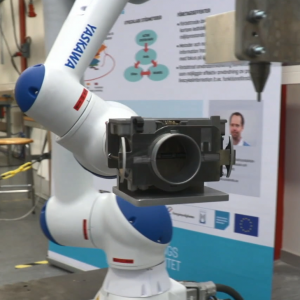Dan Lämkull
Ph.D. Ergonomics


Project time: 2022 – 2025
Budget: 11 150 000 sek
Funding: SIP Produktion2030
The project's goal is to assist industry enabling sustainable work for operators during assembly of wire harnesses.
Electrification in vehicles result in a growing number of electrical connections, resulting in increasing numbers of monotonous, repetitive, and strenuous manual assemblies of wire harnesses and high voltage cables. Wire harness installations are among the most common causes of ergonomics issues in plants. As a result, the positive shift towards electrification also negatively impacts the workforce regarding gender equality, age distribution, and the long-term sustainability of the work environment.
The project’s goal is to assist the industry in ensuring a sustainable work-life by empowering human workers during assembly of wire harnesses. The objective is to improve productivity, quality, and ergonomics of assembly installation of wire harnesses and high voltage cables using collaborative robots.
Novel technologies such as cobots can empower the assembly worker by assisting in existing operations and mitigating work-related health problems. However, there are significant challenges to resolve before successfully introducing cobots in the assembly. Besides common challenges with cobots such as productivity, safety, and achieving smooth and trustful cooperation with the operator, the design of harnesses and cables also requires special attention. These challenges can be handled already in the design and manufacturing planning phase with the help of virtual/digital tools by simulating the entire operation, including humans, cobots, and wire harnesses. However, simulating and emulating a human-robot collaboration operation of a flexible wire harness is hard, considering the deformable materials and irregular shapes of wire harnesses and the introduction of cobots in moving lines with high human involvement.
The proposed project aims to address and solve these challenges with the help of world-class competence and facilities in collaboration with consortium partners.
Vinnovas diarienr: 2022-01279
SCARCE II will develop a demonstrator to show how SMEs and associated value flows can increase efficiency, competitiveness, sustainability and internal collaboration through digitalisation. The goal is to show the value of a new digital solution. SCARCE focuses on two subcontractors in the value chain linked to Scania and Volvo. The demonstrator is a cloud-based solution that connects three test beds in the industry; Stena Industry Innovation Lab, Chalmers, RISE IVF lab, Mölndal and KTH's test bed in Södertälje with the help of Siemens, AFRY, Qbim, Virtual Manufacturing and EQPack.
2020 – 2022
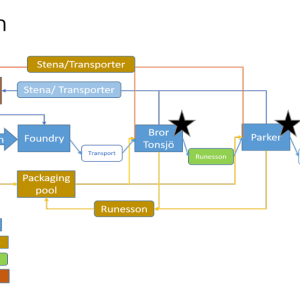
Development of a comprehensive model for safe installation of collaborative robots
2016 – 2018
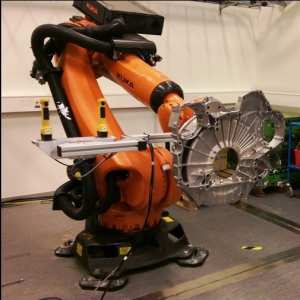
MIDWEST will develop mechanisation solutions for Post-weld treatment methods of welded components.
2020 – 2023

Maintenance in existing plants is becoming increasingly important, where predictive maintenance has become an emerging technology. The use of decision support tools contributes to environmentally and economically sustainable production. Within this project, different types of digital twins have been designed and evaluated. Specifically, new predictive model types have been tested in two different industrial case studies; a heat exchanger at SSAB and a profiled header at Svenska Fönster AB.
2017 – 2018
The project will develop a demonstrator of a digital human modelling tool considering human diversity, to be used for design, optimisation, visualisation, and verification of vehicle assembly workstations.
2019 – 2022
To demonstrate the new technology with robots that enable Swedish companies to develop innovative new products for automated production o maintenance.
2017 – 2020
The project aims at radically improving the working environment and the employee security within the heavy manufacturing industries by using and adapting the latest technology for low and ultraprecise positioning and decision support systems. The target is to increase security and safety by adapting the decision-support and positioning system for the heavy manufacturing industries.
2017 – 2018
Analysis with Manikin for improved geometrical quality during manual assembly (AMIGO)
2020 – 2022
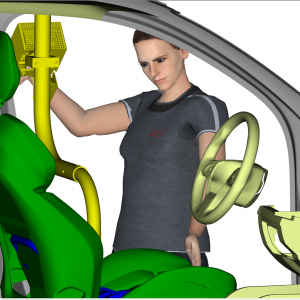
Tidsättning av manuell montering är centralt för verkstadsindustrins konkurrenskraft.
2021 – 2024
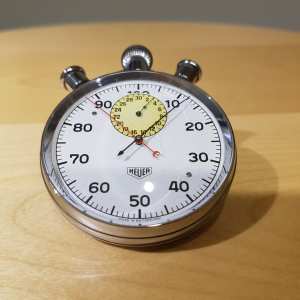
Methods for 3D scanned digital twins for efficient development and installation of production facilities at SMEs
2018 – 2021

Digi-load focuses on to enhance the competitiveness in the Swedish surface treatment industry through automation and digitalization
2017 – 2020
Knowledge is needed that can support design and control of automation in material handling systems.
2019 – 2022
Better work instructions for more efficient and inclusive work
2022 – 2025
A research collaboration between Luleå University of Technology and the company RGS 90 will provide new treatment methods for three common but problematic types of waste.
2015 – 2019
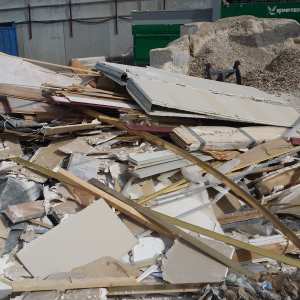
The aim of the ARR project is to develop the potential of automation in repairs and remanufacturing
2018 – 2021
